Account-Based Marketing: Building with Key Accounts in Commercial Cleaning
In the dynamic world of commercial cleaning services, acquiring leads at random is no longer sufficient to stay competitive. Instead, forward-thinking companies are embracing Account-Based Marketing (ABM), a strategic approach that focuses on building lasting relationships with specific businesses and industries – the so-called “Key Accounts.” This comprehensive blog will delve into the nuances of ABM, offering valuable insights and actionable strategies to elevate your commercial cleaning business.
By the end, you’ll understand how to optimize your marketing efforts, engage decision-makers, and nurture long-term client connections.
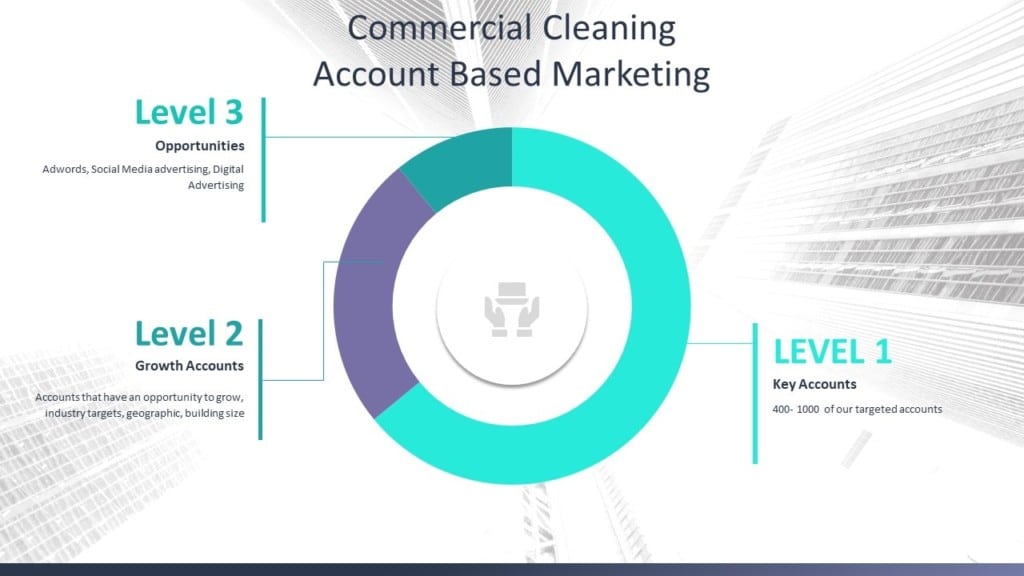
Understanding Key Accounts in Account-Based Marketing (ABM)
In the realm of ABM, Key Accounts are the foundation of success. These valuable prospects are the driving force behind a company’s revenue, often accounting for 80% of the total income. Identifying these accounts requires a thoughtful evaluation of various factors, such as referral sources, revenue potential, profit margins, and upselling or cross-selling opportunities. Furthermore, Key Accounts can be specific to particular industries, ensuring that your marketing resources are wisely allocated for maximum impact.
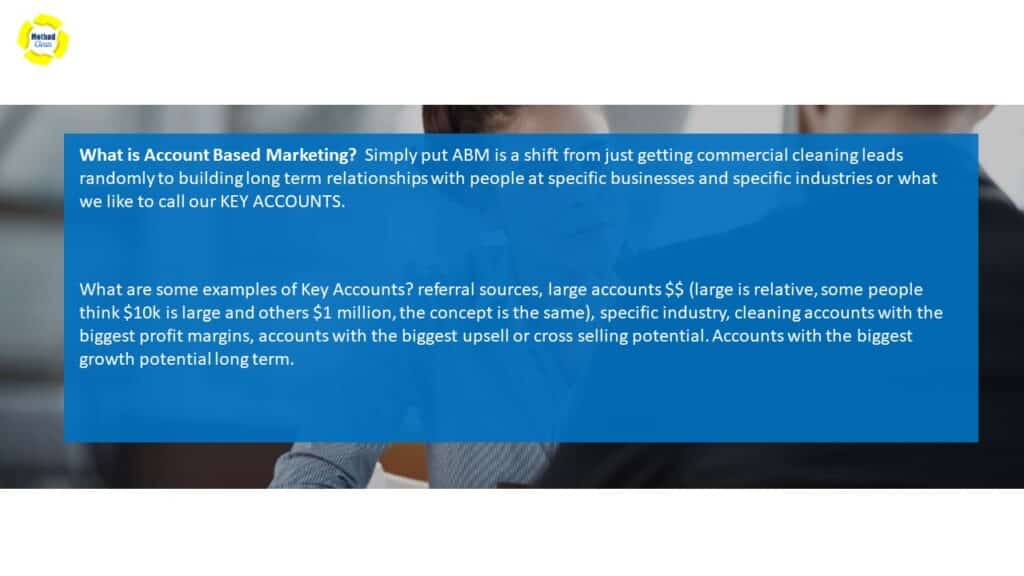
The Power of the Pareto Principle:
The renowned Pareto Principle, commonly referred to as the 80/20 rule, plays a vital role in ABM. According to this principle, 80% of the effects arise from 20% of the causes. For your commercial cleaning business, this means that 20% of your prospects are likely to contribute to 80% of your revenue.
Embracing the Pareto Principle enables you to focus your efforts on these high-potential Key Accounts, effectively streamlining your resources and optimizing your return on investment.
Living in the Past, Present, and Future:
To stand out in today’s competitive market, it is crucial to understand your customers on multiple levels – past, present, and future.
While some commercial cleaning service providers may be reactive to their customers’ immediate needs, ABM encourages a proactive approach. By addressing present concerns and anticipating future requirements, you position yourself as a reliable consultant, nurturing trust and loyalty with your clients over the long term.
This forward-looking perspective empowers you to stay ahead of the competition and retain clients even as industries evolve.
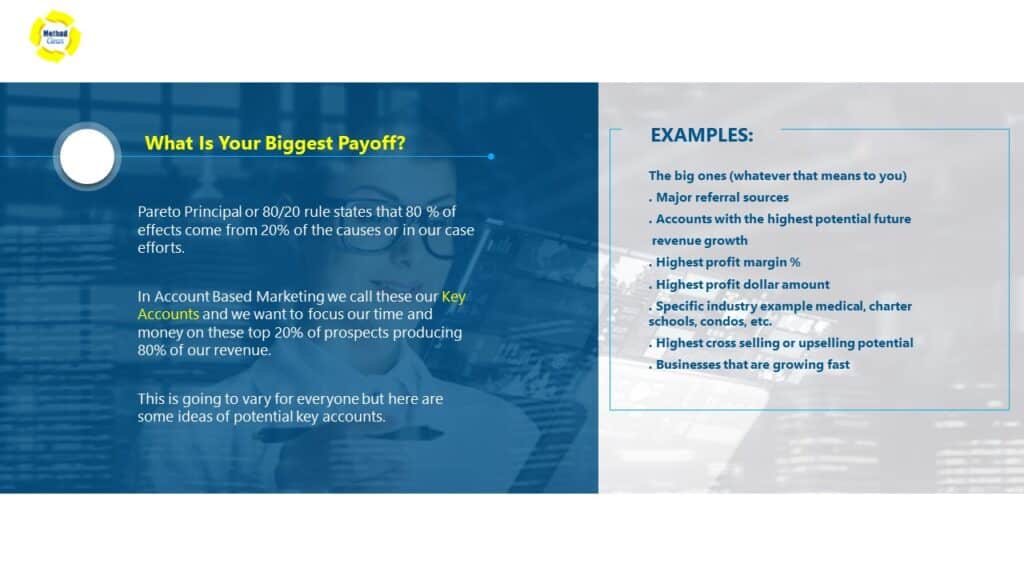
Maximizing ROI with Lead Scoring:
Lead scoring is a fundamental aspect of ABM that can significantly impact your return on investment. This process involves evaluating prospects based on their past interactions and engagement with your marketing content.
By prioritizing prospects who have shown genuine interest and are more likely to convert, you can channel your efforts effectively. For instance, if a property manager has engaged with multiple tile floor-related content, it’s a clear indicator of their interest, making them a prime candidate for personalized follow-ups, such as a live demonstration.
Engaging Multiple Decision-Makers: A Crucial Aspect of ABM
In the corporate landscape, decisions are seldom made by a single individual. In ABM, the focus is on engaging all decision-makers involved in the process.
This might entail communicating directly with facility managers, who seek approval from higher-ups, or interacting with general managers and their assistants who conduct research on their behalf. By comprehensively engaging all stakeholders, your ABM strategy ensures a cohesive approach that nurtures all relationships throughout the decision-making process.
Personalizing Marketing at Each Relationship Level:
Effective marketing requires a tailored approach at different stages of the customer relationship. ABM recognizes that not all marketing methods are created equal and that personalized strategies are more effective in nurturing long-term connections.
For instance, while billboards, radio ads, and postcards might be suitable for initial outreach, more personal approaches, like texting, email campaigns, or thoughtful gifts, are better suited for nurturing existing relationships. Understanding the relationship level empowers you to deploy appropriate marketing tactics that resonate with your prospects, fostering trust and rapport.
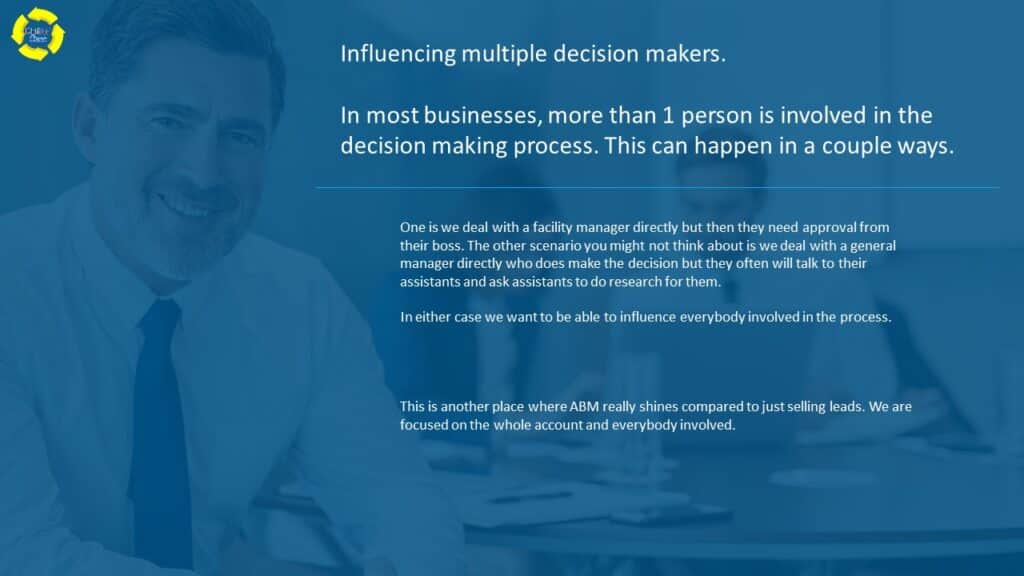
Building a Holistic ABM Strategy: Aligning Sales and Marketing
To succeed in ABM, a holistic strategy is essential. This entails aligning your sales and marketing efforts into a cohesive team rather than isolated entities.
A robust ABM plan begins by identifying the most promising Key Accounts, understanding their unique needs, and implementing personalized marketing campaigns. By leveraging data analytics, technology, and automation, you can efficiently manage your ABM initiatives and continuously refine your approach based on real-time insights.
Leveraging Technology for Enhanced ABM in Commercial Cleaning
In the digital era, technology plays a pivotal role in driving successful ABM campaigns. Utilizing customer relationship management (CRM) tools, marketing automation platforms, and data analytics software empowers you to gain deeper insights into prospect behaviors, streamline your communications, and efficiently manage your ABM initiatives. Leveraging technology effectively can significantly boost your ABM strategy’s impact and propel your commercial cleaning business to new heights.
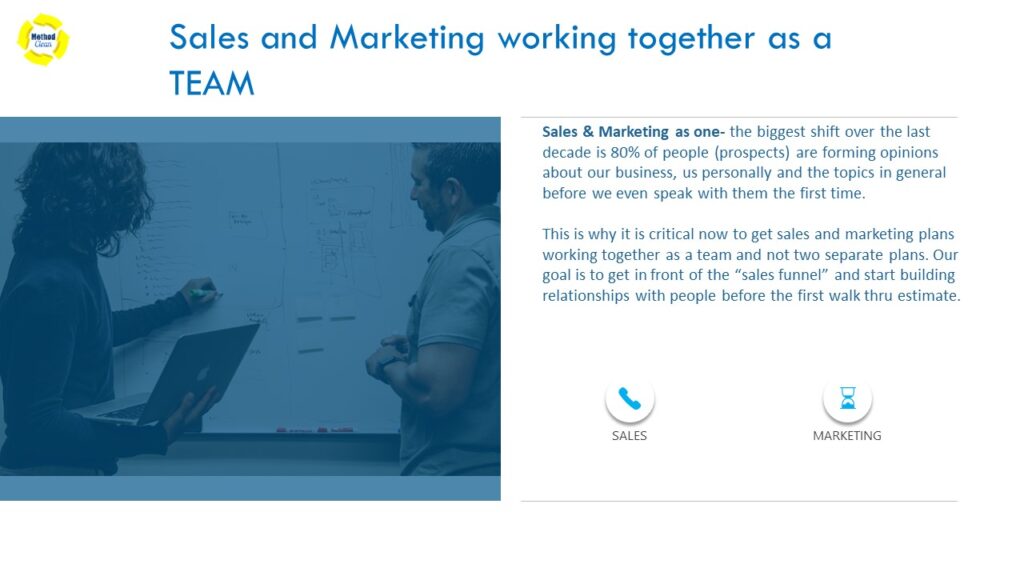
Creating Content that Resonates:
Content creation is a critical component of ABM. To engage your Key Accounts effectively, focus on producing content that speaks directly to their unique needs, challenges, and aspirations. Tailor your messaging to align with each prospect’s industry, company culture, and specific requirements.
By delivering valuable and relevant content through various channels, such as blogs, whitepapers, videos, and webinars, you can position your commercial cleaning business as an industry thought leader and a trusted partner.
Nurturing Key Account Relationships:
In ABM, the key to success lies in nurturing and maintaining strong relationships with your Key Accounts.
Regular and personalized communication, such as follow-up calls, check-ins, and personalized emails, demonstrate your commitment to their success and satisfaction. Additionally, organizing exclusive events or workshops catering to your Key Accounts’ interests fosters a sense of camaraderie and helps you stay top-of-mind when they require your services.
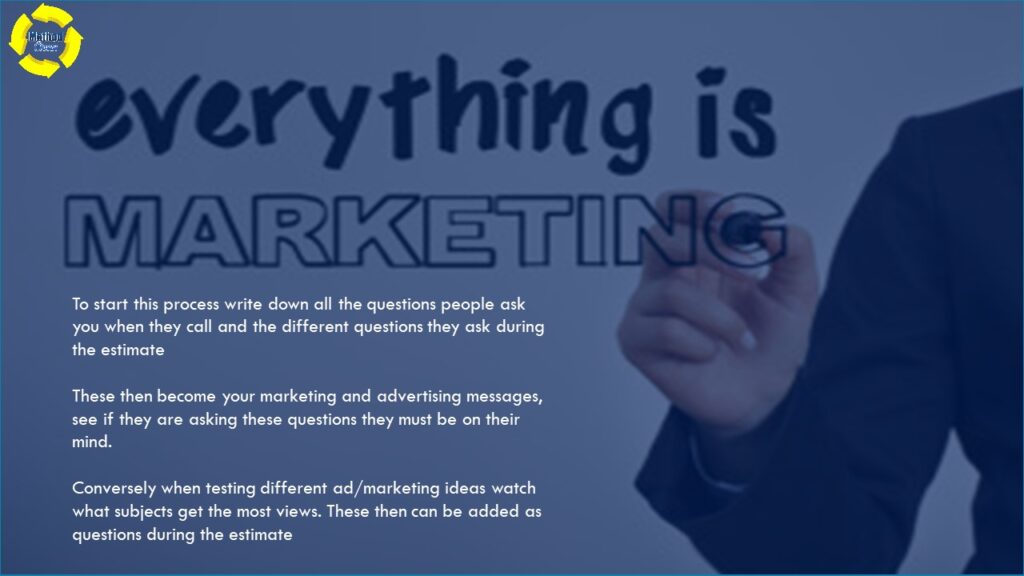
Measuring ABM Success:
As with any marketing strategy, measuring the success of your ABM efforts is vital to ongoing optimization and growth. Utilize key performance indicators (KPIs) relevant to your ABM goals, such as customer acquisition rate, revenue generated from
Key Accounts, customer retention, and lead-to-customer conversion rate. Continuously analyzing these metrics allows you to identify areas of improvement, refine your strategies, and enhance your overall ABM approach.
Conclusion:
In conclusion, Account-Based Marketing is a game-changing approach that empowers commercial cleaning services to build enduring relationships with
Key Accounts, fostering loyalty and driving substantial revenue. By aligning your resources with the most promising prospects and embracing the principles of ABM, you position your business for long-term success in a competitive landscape.
As you implement personalized strategies, leverage technology, and deliver valuable content, you will nurture meaningful connections and solidify your position as a trusted industry leader. Embrace ABM as your strategic roadmap to elevate your commercial cleaning business to new heights of success.

